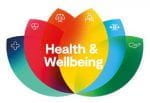Blood Pressure
Blood
Blood is a body fluid that runs through the veins, arteries and capillaries bringing oxygen and nutrients to all parts of the body. It has four components including plasma, red blood cells, white blood cells and platelets (American Society of Haematology 2020) (Hirsch, 2020) (Hoffman, 2020) (Moore and Langley 2011) (Mader and Windelspecht 2012).
What is blood pressure?
Blood pressure (BP) is part of the human circulatory system and refers to ‘the force exerted by blood or the pushing of blood against the artery wall’ (Geatrell et al, 2008, p. 46). This force is called hydrostatic pressure and is dependent on the force in which the ventricle contracts and also the diameter of the blood vessel. Blood needs to circulate and flow through the body at a certain pressure (Geatrell et al, 2008) (Chaudhry et al, 2020).
Human blood pressure will change at different times of the day depending on their level of activity and food consumption with normal blood pressure fluctuating for any one person within a range (Geatrell et al, 2008). Although conditions should be standardised, it is also important to consider other factors such as age, medication and lifestyle (Holland, 2019) (Musini and Wright, 2009).
Ideal or normal blood pressure is 90/60mmHg to 120/80mmHg for most healthy adults (Blood Pressure UK, 2020).
Systolic and Diastolic
Systolic blood pressure is the force created on the blood vessels when the heart beats and pushes blood through the arteries (NHS, 2019).
Diastolic blood pressure is the pressure in the arteries when the heart rests in between beats (Ambardekar 2020) (NHS, 2019).
While testing blood pressure, the practitioner can use a stethoscope to listen for the blood moving past the inflated cuff – this is systolic pressure. When the pressure in the cuff is reduced until no sound is heard, this indicates that the blood is flowing freely through the artery – this is diastolic pressure.
What is hypertension?
Hypertension is raised or high blood pressure whereby the blood moves through the arteries at a higher pressure than normal (Mader and Windelspecht 2012). According to the World Health Organisation 1.13 billion people are affected worldwide with hypertension (WHO, 2019). Hypertension can be caused by different things which increase the risk including a diet that is high in salt, smoking or being overweight (Geatrell et al, 2008) (NHS, 2019). Physical activity and exercise can lower blood pressure.
Possible causes of blood pressure changes
Changes in blood pressure can occur due to health conditions such as diabetes or COPD, physiological factors including genetics, temperature, exercise or pregnancy or psychological factors such as stress or anxiety (Holland, 2019) (Moore and Langley, 2011).
How to measure blood pressure
https://www.youtube.com/watch?v=3C0jbTg564I&t=205s
Blood pressure is measured using a sphygmomanometer.
- Make sure that the patient sits for 15 minutes prior to testing. This is to ensure precision and accuracy of measurement as blood pressure can fall while rested.
- Ask the patient to sit in a chair with their back supported, gain consent and ask the following questions: Do you mind if I take your blood pressure? Is there anything that may be a threat to the validity of the reading, such as caffeine intake, alcohol or medications?
- Place the sphygmomanometer cuff around the patient’s resting bare upper arm about 3cm above the elbow with a tight fitting but not so tight that could cause an occlusion. Make sure the tube is facing downwards, running along the inside of the inner elbow crease.
- Ask the patient to sit still and try to remain calm.
- Press the start button to inflate the cuff until this closes the artery by its pressure. It is worth explaining to the patient that the cuff will tighten and this should take less than a minute. Sit quietly with the patient during this time.
- The numbers will change on the machine during this time until the two blood flow readings will be shown on the digital display and can be recorded and analysed.
- Repeat steps 3-6 two to three times on both arms for accuracy and record readings.
References
American Society of Haematology (2020) Blood Basics Retrieved from https://www.hematology.org/education/patients/blood-basics
Ambardekar, N. (2020) WebMD What is my systolic blood pressure? Retrieved from https://www.webmd.com/hypertension-high-blood-pressure/qa/what-does-the-systolic-blood-pressure-number-mean
Blood Pressure UK (2020) Understanding your blood pressure Retrieved from http://www.bloodpressureuk.org/your-blood-pressure/understanding-your-blood-pressure/
Chaudhry, R. Miao, J.H. Rehman, A (2020) Physiology, Cardiovascular Retrieved from https://www.ncbi.nlm.nih.gov/books/NBK493197/
Geatrell, B. Lowrie, P. and Tilley, A (2008) OCR Human Biology Essex Pearson Education Limited
Hirsch, L. (2019) Kids Health What is blood? Retrieved from https://kidshealth.org/en/kids/blood.html
Hoffman, M. (2020) Picture of Blood Retrieved from (accessed 04.10.20)
Holland, K (2019) Why does my blood pressure fluctuate? Retrieved from https://www.healthline.com/health/fluctuating-blood-pressure
Mader, S.S and Windelspecht, M. (2012) Human Biology (12th Ed) Avenue of the Americas The McGraw-Hill Companies Inc
Moore, J.T. and Langley, R.H (2011) Biochemistry for Dummies (2nd Ed) Indianapolis Wiley Publishing Inc
Musini, V.M. and Wright, J.M. Factors Affecting Blood Pressure Variability: Lessons Learned from Two Systematic Reviews of Randomized Controlled Trials Retrieved from https://www.ncbi.nlm.nih.gov/pmc/articles/PMC2682566/
NHS (2019) What is blood pressure? Retrieved from https://www.nhs.uk/common-health-questions/lifestyle/what-is-blood-pressure/
NHS (2019) Causes, High blood pressure (hypertension) Retrieved from https://www.nhs.uk/conditions/high-blood-pressure-hypertension/causes/
Norris, M. and Siegfried, D.R. (2011) Anatomy and Physiology for Dummies New Jersey Wiley Publishing, Inc
WebMD (2020) Diastole vs. Systole: Know Your Blood Pressure Numbers Retrieved from https://www.webmd.com/hypertension-high-blood-pressure/guide/diastolic-and-systolic-blood-pressure-know-your-numbers#1
World Health Organisation (WHO) (2019) Hypertension Retrieved from https://www.who.int/health-topics/hypertension/#tab=tab_1
